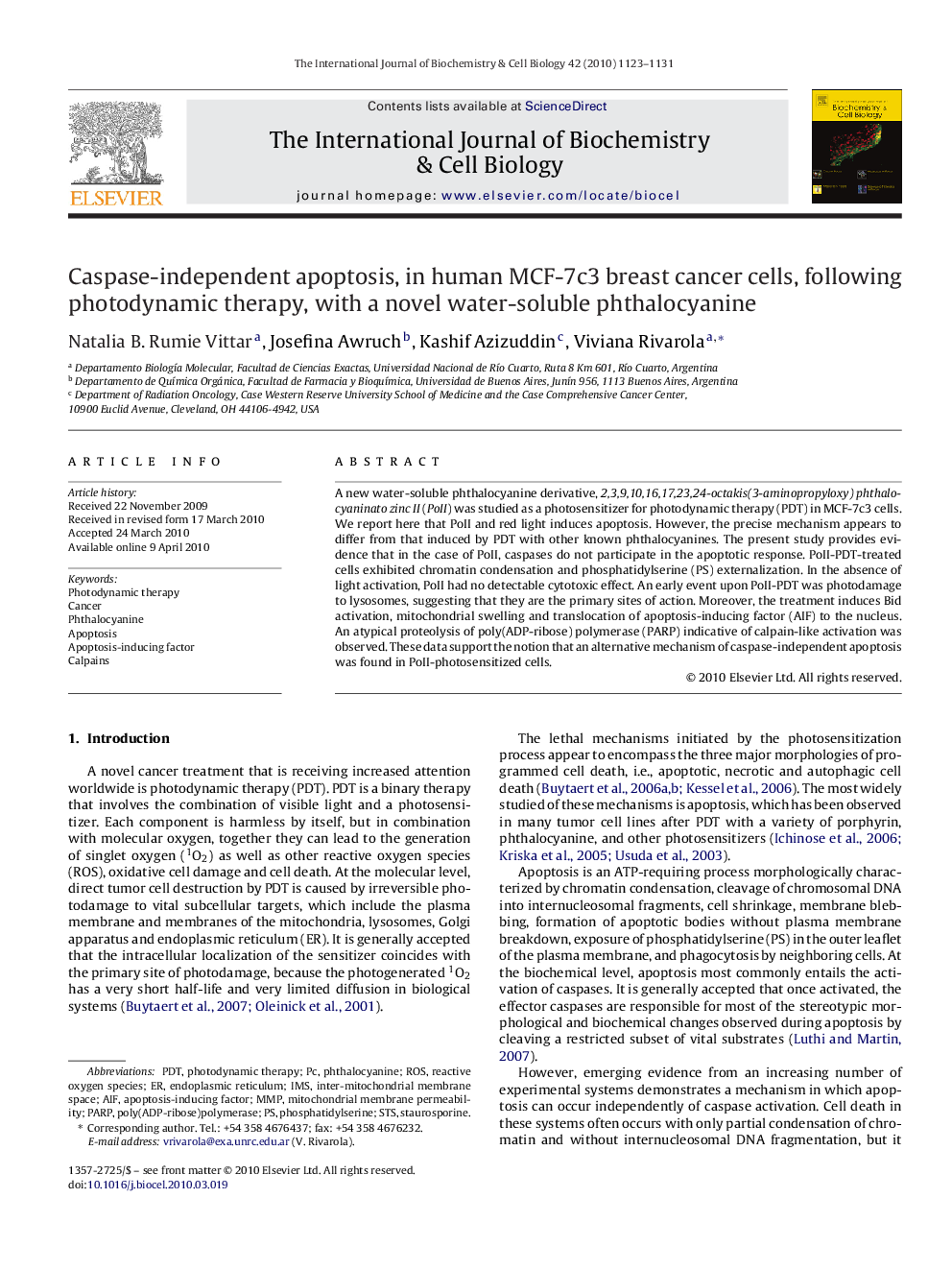| Article ID | Journal | Published Year | Pages | File Type |
|---|---|---|---|---|
| 1984428 | The International Journal of Biochemistry & Cell Biology | 2010 | 9 Pages |
A new water-soluble phthalocyanine derivative, 2,3,9,10,16,17,23,24-octakis(3-aminopropyloxy) phthalocyaninato zinc II (PoII) was studied as a photosensitizer for photodynamic therapy (PDT) in MCF-7c3 cells. We report here that PoII and red light induces apoptosis. However, the precise mechanism appears to differ from that induced by PDT with other known phthalocyanines. The present study provides evidence that in the case of PoII, caspases do not participate in the apoptotic response. PoII-PDT-treated cells exhibited chromatin condensation and phosphatidylserine (PS) externalization. In the absence of light activation, PoII had no detectable cytotoxic effect. An early event upon PoII-PDT was photodamage to lysosomes, suggesting that they are the primary sites of action. Moreover, the treatment induces Bid activation, mitochondrial swelling and translocation of apoptosis-inducing factor (AIF) to the nucleus. An atypical proteolysis of poly(ADP-ribose) polymerase (PARP) indicative of calpain-like activation was observed. These data support the notion that an alternative mechanism of caspase-independent apoptosis was found in PoII-photosensitized cells.
